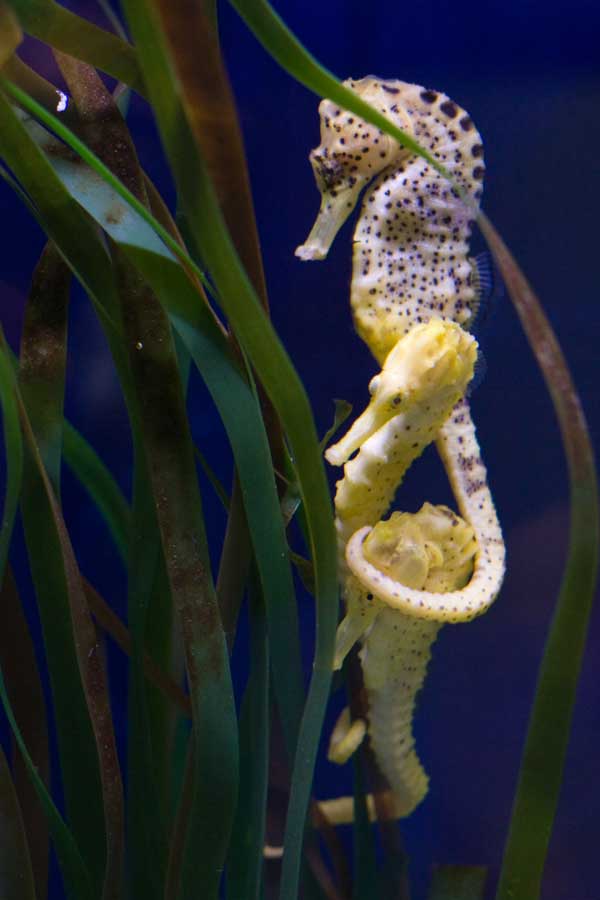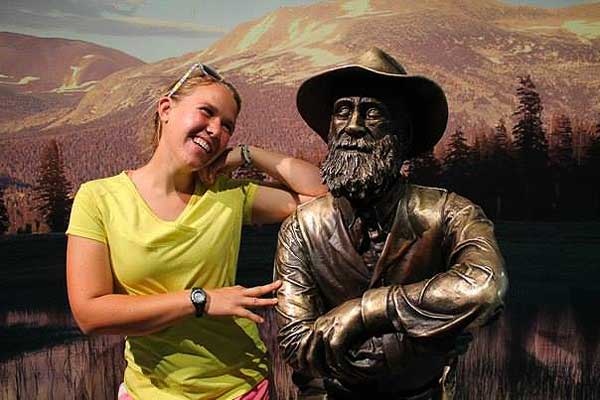When teaching students, have you ever gotten a question that stumped you?
If the answer is no, then I applaud you on your vast knowledge of everything. For the rest of us, we can make an educated guess based on prior knowledge or encourage the questioner to do the same. Sometimes a thought-provoking question from a student can even inspire your own independent research. One of my favorite stumpers is:
Why do male seahorses give birth?
Reproduction in General
 Let’s begin with a little lesson on the reason the R in FWARPS is so important to a species. Yes, ladies and gentlemen, I am talking about reproduction.
Let’s begin with a little lesson on the reason the R in FWARPS is so important to a species. Yes, ladies and gentlemen, I am talking about reproduction.
Individuals in a population are bound to natural selection. Natural selection is the process which favors traits in a population permitting some individuals in that population to survive and reproduce. 1
Through successful reproduction, natural selection allows individual organisms to pass on genetic information generation after generation. An organism’s “fitness” is determined by its capability to pass on genes to offspring and not necessarily by its speed or strength (although speed and strength could help the individual survive longer to reproduce).
 Reproduction in Seahorses
Reproduction in Seahorses
Sometimes natural selection can lead to adaptations over time in a species such as male pregnancy in seahorses. Seahorses are small animals; they live in a turbulent place (the ocean…), and have many predators. This means that seahorses need to reproduce efficiently in their habitat. Enter r-selection. r-selection is a kind of natural selection termed for species that produce many offspring at once and ditch the parenting books because the species lives in an unstable environment. 2 In r-selection, once the offspring are delivered, they need to fend for themselves. The parents can then reproduce again. 
Seahorses can produce 1,000 offspring in one delivery, which aides in an individual seahorse’s ability to pass on genes. Seahorses take things a step further because both parents contribute to the energy needed for mass amounts of offspring. Essentially, the female produces the eggs and deposits her unfertilized eggs into the male’s brood pouch (a sort of pregnancy pouch). He fertilizes them. Inside his brood pouch the male seahorse ensures the temperature, oxygen, blood flow, and water salinity are just right for the eggs. 3 The male gives birth and his job is done. The seahorse offspring are on their own.
 Why does natural selection favor male seahorses giving birth?
Why does natural selection favor male seahorses giving birth?
Well, by sharing parental contributions, both male and female seahorses are able to reproduce quickly. It has even been observed that after the female seahorse deposits her eggs in the male seahorse, the female can produce more eggs to be deposited in the male’s pouch as soon as he delivers that first batch. This equal contribution in reproduction is especially useful because only about 5 in 1,000 seahorses survive after dad delivers them. 3
Adaptations such as the male pregnancy can lead to secondary adaptations as well. While the seahorse remains monogamous during a breeding season, the pipefish, another species in which males get pregnant, has an abundant amount of females and a lack of males. The brood pouch space in male pipefish is limited, so female pipefish compete for males. In order to compete, female pipefish have developed brightly colored decoration 3. This demonstrates how one characteristic in a species, such as role reversal in reproduction, can lead to secondary traits or adaptations.

With so many female pipefish and so little male pipefish, the females compete and court males. However, sometimes even the brightest ornamentation does not attract a mate.
In our classes at High Trails, students can ask hard questions. It is important as instructors that we try to answer them to the best of our ability. Also, as educators we need to continuously educate ourselves. Through writing this post, I learned that natural selection is like a puppet master that favors traits enabling individuals of the species to survive and reproduce. Occasionally, this selection can lead to the strange adaptations that exist in our friend the male seahorse.
At High Trails Outdoor Science School, we literally force our instructors to write about elementary outdoor education, teaching outside, learning outside, our dirty classroom (the forest…gosh), environmental science, outdoor science, and all other tree hugging student and kid loving things that keep us engaged, passionate, driven, loving our job, digging our life, and spreading the word to anyone whose attention we can hold for long enough to actually make it through reading this entire sentence. Whew…. www.dirtyclassroom.com
- http://evolution.berkeley.edu/evolibrary/misconceptions_teacherfaq.php #b5 ↩
- http://www.bio.miami.edu/tom/courses/bil160/bil160goods/16_rKselection.html ↩
- http://news.nationalgeographic.com/news/2002/06/0614_seahorse_recov.html ↩
- http://news.nationalgeographic.com/news/2002/06/0614_seahorse_recov.html ↩
- http://news.nationalgeographic.com/news/2002/06/0614_seahorse_recov.html ↩


Comments are closed.